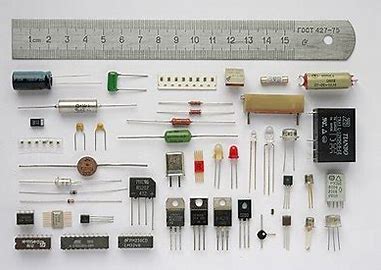India’s movement for digitization means staying upbeat and updated with the latest innovaion in the field of electronics & electrical components . Electronics and electrical components form the core of any digital or automated device . ‘Made in India’ campaign gained pace when BHEL stepped inn to manufacture ventillators , oxygen generators and more , in times of covid19 pandemic. Thus, giving a vital push to the electronics and electrical components industry. 85% of electronics and electrical components were procured domestically by BHEL. Further more , India also managed to reach new high’s in the exporting arena. ” Change is the only constant ” is apt for the industry of electronics and electrical components.
Electronics and Electrical components industry is getting competitive in south asian countries. Countries like vietnam , china , india, indonesia and others are stepping up with the technology in electronics & electrical components. Smd components are the miniature versions of electronics and electrical components.
The major electrical and electronic components used in electrical and electronic projects mainly involve these components like resistors, capacitors, fuses, transistors, integrated circuits, relays, switches, motors, circuit breakers, etc. In many circuits, they are classified into two categories such as active components and passive components.
Key Electronics and electrical components are listed below :
1. Relay’s

Relays play a essential role in electronics & electrical components arena . Relay is like the captain of the electronic and electrical component.
A switch is a component that opens (turn off) & close (turn on) an electrical circuit. whereas, a relay is an electrical switch that control (switch on & off) a high voltage circuit using a low voltage source. A relay completely isolates the low voltage circuit from the high voltage circuit.
They are electrically operated switch and thus are commonly used in electromagnet (coil) to operate the internal mechanical switching mechanism (called as contacts). When a relay contact is open, this will switch power ON for a circuit when the coil is activated. They control several circuits with one signal. .The 3 main types of relays on basis of components and application is as follows –
- Electromechanical
- Solid-state
- Reed.
2. Resistors

Resistors is like the wisdom player of the electronic and electrical components team. It can resist when needed. Resistors are the most commonly used components in electronic circuits and devices. The main purpose of a resistor is to maintain specified values of voltage & current in an electronic circuit. As per the ohms law it is V=IR . All electrical devices need electronic components to an extent.
A Resistor works on the principle of Ohm’s law and the law states that the voltage across the terminals of a resistor is directly proportional to the current flowing through it. The unit of resistance is Ohm. The Ohm symbol shows resistance in a circuit from the name Geog Ohm – a German physicist who invented it.
Based on the colour chart below we can identify the resistance . Thus , colour coding chart is important for us to identify the nomenclature of resistor.
Resistor Colour Chart
| Colour | 1st Band | 2nd Band | 3rd Band | Multiplier | Tolerance |
|---|---|---|---|---|---|
| Black | 0 | 0 | 0 | 1Ω | |
| Brown | 1 | 1 | 1 | 10Ω | ± 1% (F) |
| Red | 2 | 2 | 2 | 100Ω | ± 2% (G) |
| Orange | 3 | 3 | 3 | 1KΩ | |
| Yellow | 4 | 4 | 4 | 10KΩ | |
| Green | 5 | 5 | 5 | 100KΩ | ± 0.5% (D) |
| Blue | 6 | 6 | 6 | 1MΩ | ± 0.25% (C) |
| Violet | 7 | 7 | 7 | 10MΩ | ± 0.10% (B) |
| Gray | 8 | 8 | 8 | ± 0.05% | |
| White | 9 | 9 | 9 | ||
| Gold | 0.1Ω | ± 5% (J) | |||
| Silver | 0.01Ω | ± 10% (K) |
- Wire wound resistors
- Metal film resistors
- Thick film and Thin film resistors
- Network and Surface Mount Resistors
- Variable Resistors
- Special resistors
3. Electronic Switches

Switches is like the opening batsman of the electronic and electrical components team. Electronic switches play a important role in creating open and closed circuits . Depending on various applications , switches are designed. Various types of switches are shown in the image above. These switches are similar to electrical switches that we use in our day to day life.
A toggle switch is a type of electrical switch that is actuated by moving a lever back and forth to open or close an electrical circuit. There are two basic types: maintained contact and momentary toggle switches. Various types of switches are mentioned below:
- SPST (Single Pole Single throw)
- SPDT (single pole double throw)
- DPST (double pole, single throw)
- DPDT (double pole double throw)
The SPDT has a simple input switch that connects to two output devices whereas, DPDT has two SPDT circuits and thus it can control two separate circuits at the same time. Thus, DPDT switches are thus more advantageous than the SPDT switches are they are capable of controlling two different appliances at the same time.
4. Fuses & holders

Fuses is like the bouncer of the electronic and electrical components team. Like the Fuses cutoff the excess current that intends to pass through thus, protecting the device.
In electronics & electrical engineering, a fuse is an electrical safety device that operates to provide overcurrent protection of an electrical circuit. Its essential component is a metal wire or strip that melts when too much current flows through it, thereby stopping or interrupting the current. A fuse holder is a type of fuse accessory that is required to integrate fuses that cannot be dropped directly into conductive paths due to their shape and size.
The main category of Fuses are based on the type of circuit they are used in i.e. AC Fuses and DC Fuses. Again, AC Fuses are divided in to High Voltage (HV) Fuses and Low Voltage (LV) Fuses. High Voltage (HV) AC Fuses are used for voltages above 1000V and Low Voltage (LV) AC Fuses are used for voltages less than 1000V. Thus, make sure to use the correct fuse as per your application.
5. Heat sink

Heatsinks is like the most fit player of the electronic and electrical components team.
Heat that if left unchecked could reduce the life span or even destroy outright the processor that created it. Thermal management increasingly needed when dealing with electronic devices to satisfy the objectives and of functional integrity and operational integrity. A lower temperature will yield satisfactory function and increase the expected life of the electronics. The application of a heat sink satisfies those two objectives. A heat sink is a heat dissipation device that consists of a base and fins that extend outward. The performance is affected by air velocity, choice of the material, fin design and surface treatment.
When a chip heats up from use the heat sink removes and disperses the heat to keep chip at a proper operational temperature. The heat comes in to the fins and then the flow takes it away by change of the enthalpy across the surface. Without the use of the heat sink the chip would over heat which could destroy the entire system. Anodizing is the electrochemical process that thickens and toughens the naturally occurring protective oxide layer on the surface of metal.
A heat sink is a heat exchanger that transfers the heat generated by an electronic or a mechanical device to a low temperature fluid medium, often air or a liquid because, air and liquid have lot of space for atoms to move and create energy. There are premierly 2 types of heat sinks .
- Passive heat sinks
- Active heat sinks
Passive heat sinks are those that don’t rely on forced air flow (fans) and are considered more reliable than active solutions. So, we can say that passive heat sinks are more natural in terms of their mechanisms.
6. Integrated circuits

Integrated circuits is like the wittiest player of the electronic and electrical components team Integrated circuit (IC), also called microelectronic circuit, microchip, or chip, an assembly of electronic components, fabricated as a single unit, in which miniaturized active devices (e.g., transistors and diodes) and passive devices (e.g., capacitors and resistors) and their interconnections are built up on a thin substrate of semiconductor material .Integrated circuits are typically made of silicon.
Thus, The resulting circuit is thus a small monolithic “chip,” which may be as small as a few square centimetres or only a few square millimetres. So, the individual circuit components are generally microscopic in size.
There are three main types of integrated circuits:
- Digital
- Analog
- Mixed signal
7. Potentiometer
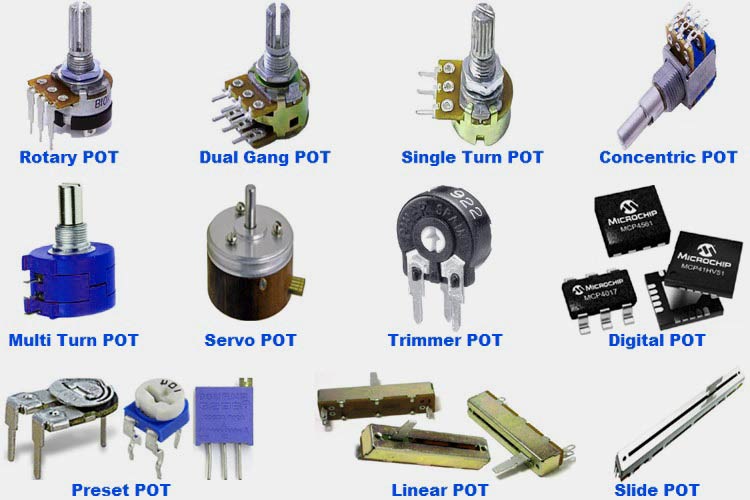
Potentiometre is like the most versatile player of the electronic and electrical components team. A potentiometer is a three-terminal resistor with a sliding or rotating contact that forms an adjustable voltage divider. If only two terminals are used, one end and the wiper, it acts as a variable resistor or rheostat. Thus, Adjusting the voltage plays a major role in any electronic device.
Most commonly used potentiometre is a trimpot. A trimpot or trimmer potentiometer is a small potentiometer which is used for adjustment, tuning and calibration in circuits. When used in variable resistance (wired as a rheostat) they are called preset resistors.
Different type of potentiometres are stated below:-
- Rotary potentiometer,
- Linear potentiometer
- Digital potentiometer
8.Tinned copper Cables & wires

Tinned copper cables & wires is like the well conducted player of the electronic and electrical components team .Tinned copper wire is just as conductive as bare copper wire, but the thin layer of tin helps the wire resist corrosion. Tinned copper wire can last up to 10 times longer than its non-tinned counterpart, and because solder is composed primarily of tin, tinned wire is incredibly easy to solder.
So, extra layer of tin acts as a support against moisture & water thus, preventing cables from corroding.
9. Connectors
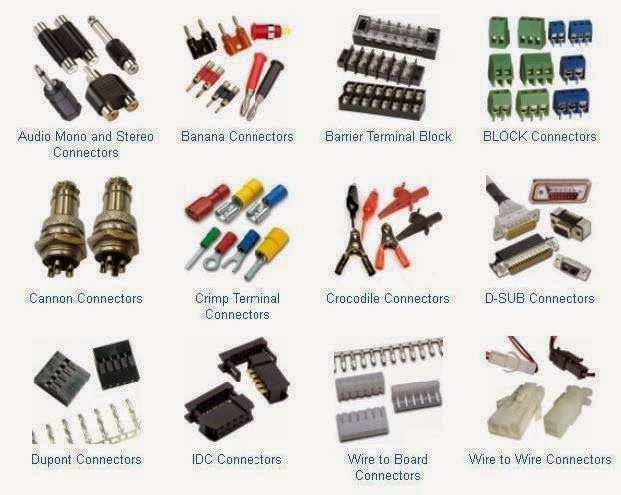
Connectors is like the most outgoing player of the electronic and electrical components team. Connector is an electromechanical device used to join electrical conductors and create an electrical circuit. Most electrical connectors have a gender – i.e. the male component, called a plug, connects to the female component, or socket. So, connectors is nothing but a combination of 2 or more blocks . Connectors must be insulated well before it is crimped or tightened .
Electrical connectors are classified into three types based on their termination ends:
- board-to-board connectors,
- cable/wire-to-cable/wire connectors
- cable/wire-to-board connectors
10. Led’s
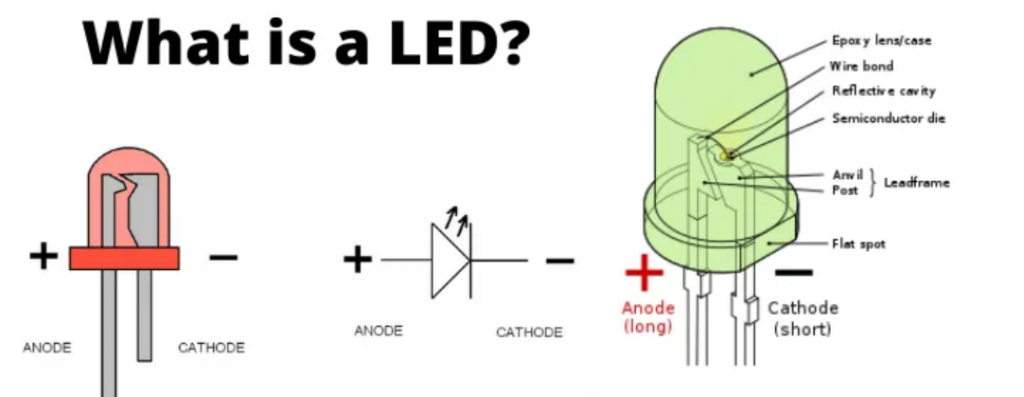
LED is like the most enlightened player of the electronic and electrical components team . A light-emitting diode is a semiconductor light source that emits light when current flows through it. Electrons in the semiconductor recombine with electron holes thus, releasing energy in the form of photons.
There are different colours of led’s available in the market to suit our purpose . They can be commonly found in the sizes of 3mm, 5mm and 10mm.
12. Soldering iron
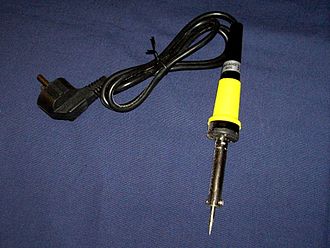
A soldering iron is a hand tool used in soldering. It supplies heat to melt solder so that it can flow into the joint between two workpieces. Since this plays a critical role in connection we must choose the same with due diligence. Thus, ensuring that the element used in soldering iron is of good quality.
12. Capacitors

A capacitor is a device that stores electrical energy in an electric field. It is a passive electronic component with two terminals. The effect of a capacitor is known as capacitance. Capacitance = Electric charge / voltage . Thus, higher the voltage means lower capacitance .
Various types of capacitors are as follows :
- Electrolytic Capacitor
- Mica Capacitor
- Paper film type Capacitor
- Film Capacitor (multi layered)
- Non-Polarized Capacitor
- Ceramic Capacitor
.
13. Fans and motors

Fans have motors, relying on permanent magnets in order to attract and repel a rotor around the axis using electronic switching. Motors convert the energy. As a result, an exothermic reaction or heat production thus, to control this heat we need fans to cool it down.
14. buzzers

A buzzer or beeper is an audio signaling device, which may be mechanical, electromechanical, or piezoelectric (piezo for short). Typical uses of buzzers and beepers include alarm devices, timers, and confirmation of user input such as a mouse click or keystroke. Based on construction, there are the following kinds of buzzers:
- Piezoelectric buzzers.
- Magnetic buzzers.
- Electromagnetic buzzers.
- Mechanical buzzers.
- Electromechanical buzzers.
Thus, buzzers are more or less the audio based signalling devices .
15. Diodes
A diode is a two-terminal electronic component that conducts current primarily in one direction; it has low resistance in one direction, and high resistance in the other.
The vast difference in resistance on both the ends make it favourable for various applications.
Types of Diodes
- Light Emitting Diode
- Laser diode
- Avalanche diode
- Zener diode
- Schottky diode
- Photodiode
- PN junction diode
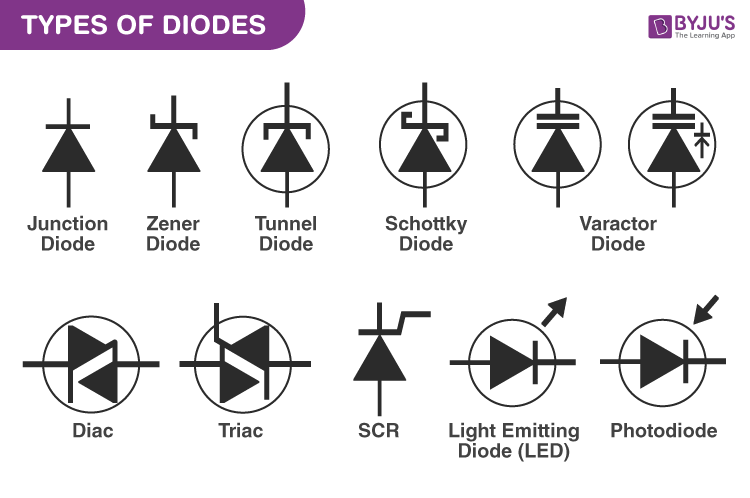
16. Transistors
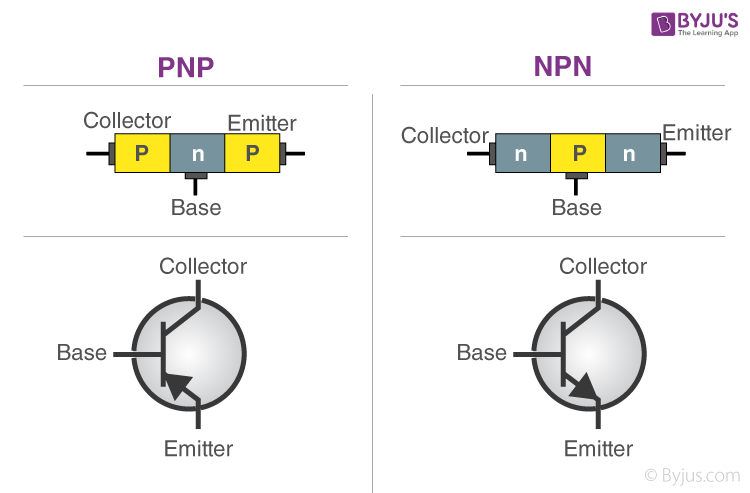
A transistor is an electronic device to amplify electronic signals. Transistor is made of semi-conductor materials. Transistors are mainly classified into two types as Bipolar Junction Transistors (BJT) and Field Effect Transistors (FET). The BJTs are furthermore classified into NPN and PNP transistors.
Transistors ensure that the signal doesnt attenuate or dies before reaching its exact destination .
17. SMD components
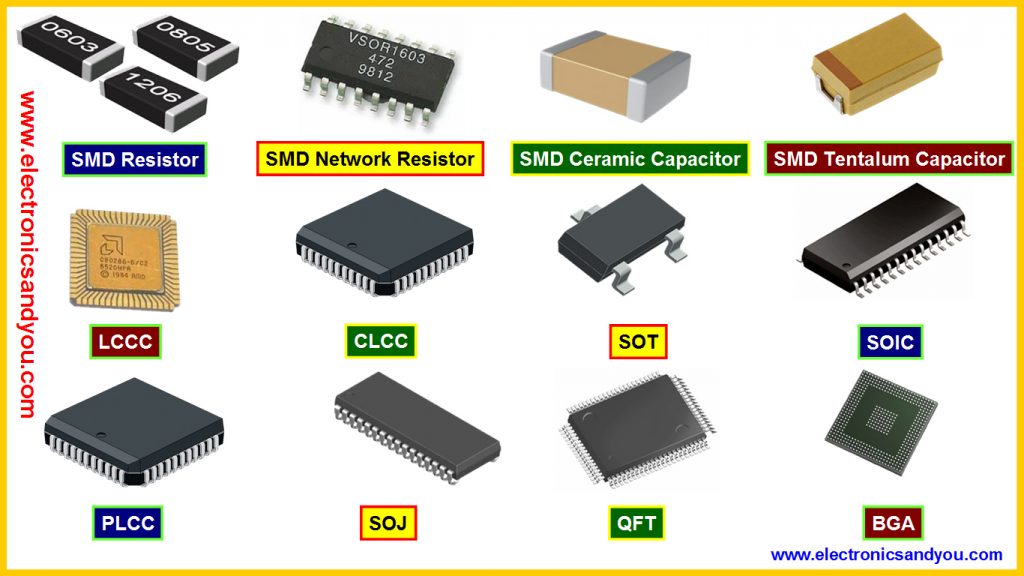
Miniature forms are the smd components . Like, our apple phones use these smd components to ensure sleek & slim shape without compromising on performance.
Surface mount devices, SMDs, or SMT components come in a variety of packages. As virtually all mass produced electronics uses surface mount technology: surface mount components are of great importance
These surface mount components come in a variety of packages, most of which are standardised to make the manufacture of the PCB assemblies using automated equipment much easier.
Some of the most widely used components are surface mount resistors and surface mount capacitors. These SMD resistors and capacitors these come in small rectangular packages, some of which are absolutely minute.
Additionally there is a variety of different SMT packages for integrated circuits dependent upon the level of interconnectivity required, the technology being used and a variety of other factors.
A number of other components are available, some of which are in standard packages, but others, because of their very nature need specialised packages with non-standard outlines.
18. Switches
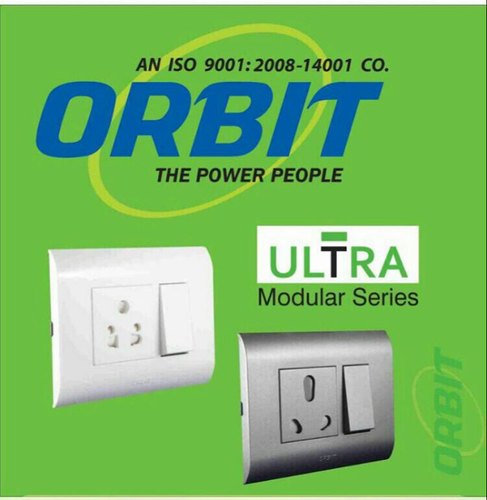
A switch in an electronic device is used to interrupt the flow of electricity or electric current. Electrical switches are binary devices, they can be either completely off or completely on. Switch is used to break or make the electronic circuit.
19. Electrical Miniature circuit breakers

Miniature Circuit Breaker is an automatically operated electrical switch. Miniature circuit breakers are intended to prevent damage to an electrical circuit as a result of excess current. They trip down during an overload or short circuit to protect against electrical faults and equipment failure.
It is important for you to know about the types of MCB trip curves to decide what type to use for different appliances for the correct electrical system. This is the selection chart or the criteria to make a call on one of the MCBs. But before that, it is vital to understand what a trip curve means. Trip curves are essentially nothing but the maximum current that a particular MCB can withstand.
There are about six different types of MCB, which are A, B, C, D, K and Z. Firstly, Type A trips off the circuit when the current exceeds 2-3 times the actual current rating. Next, type B, which trips off when the current flow is 3-5 times the actual flow and finds a use for cable protection.
The best-suited type of MCB for domestic appliances, where the current load is medium, is type C. Type C MCB trips off when the flow of current is 5-10 times more than normal. Type D MCB has a high resistance as they can withstand up to 10-20 times the current rate. If you are looking for circuit breakers for devices with high starting current load like a motor, then type D is the ideal choice. The type K MCB withstands up to 8-12 times the initial charge .Thus, can be used for bulky load devices.
20. Electrical cables & wires
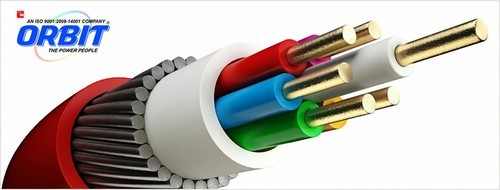
Wire is a single electrical conductor. A group of wires swathed in sheathing form a cable. They carry electrical currents. No. of strands and American wire gauge tell us the current carrying capacity.
21.Electrical Lights

Projection of Photons from the body of a contracting Electron in motion through a frictional Medium. There are various types of decorative lights available in the market.
When done right, lighting can brilliantly transform a space, setting the mood of a room and reflecting the personality of the entire home. But when done wrong, there is nothing else our eyes can set focus to.
There might not be any other component of interior design that mixes practicality and aesthetics as much as lighting does. Lighting might seem simple, but unfortunately, that is not the case.
Lighting is both a science and art–the reason why it can be so convoluted is due to this balance between design and utility. So we will be discussing the importance of lighting in interior design, and why you need to spend a little extra time with choosing how you about lighting your interior.
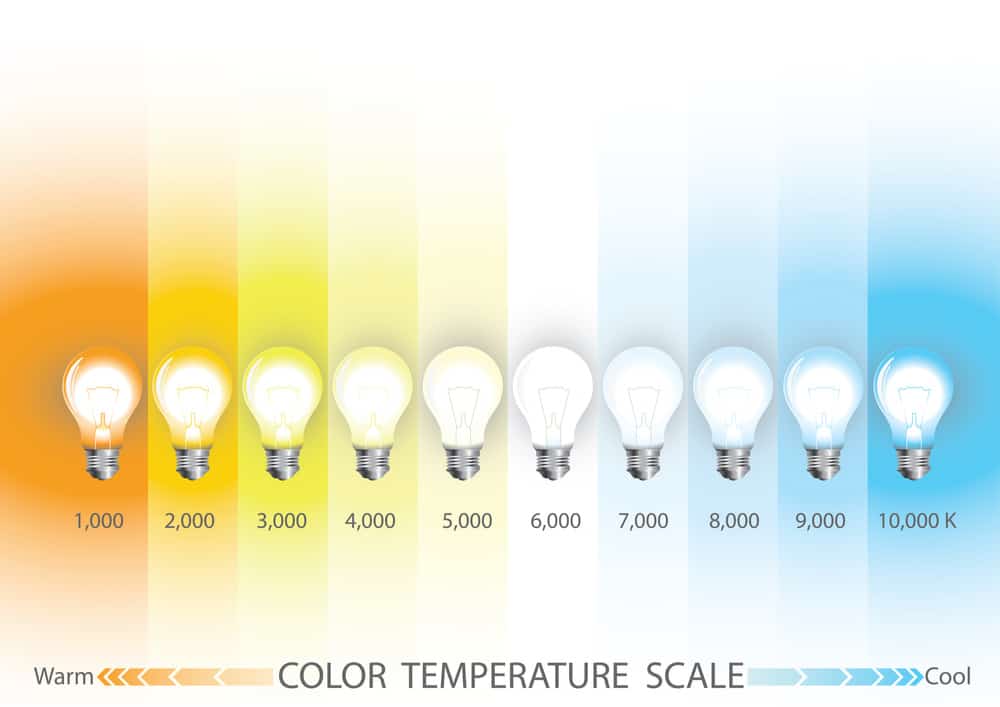
22. Electronic Sensors
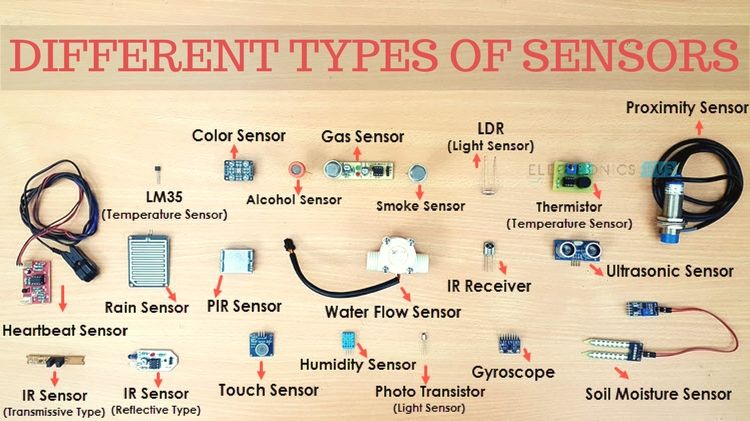
Sensor/Detectors/Transducers are electrical, opto-electrical, or electronic devices composed of specialty electronics or otherwise sensitive materials, for determining if there is a presence of a particular entity or function.
Many types of sensors, detectors, and transducers are available including those for detecting a physical presence such as flame, metals, leaks, levels, or gas and chemicals, among others. Some are designed to sense physical properties such as temperature, pressure, or radiation, while others can detect motion or proximity.
They operate in a variety of manners depending on the application and may include electromagnetic fields, or optics, among others. Many applications over a wide range of industries use sensors, detectors, and transducers of many kinds to test, measure, and control various processes and machine functions. With the advent of the Internet of Things (IoT), the need for sensors as a primary tool to provide enhanced automation is increasing.
Sensor gives an output by detecting the changes in quantities or events. In general, sensors are termed as the devices that generate an electrical signal or optical output signal corresponding to the variations in the level of inputs.
- Temperature Sensor
- IR Sensor
- Ultrasonic Sensor
- Touch Sensor
- Proximity Sensors
- Pressure Sensor
- Level Sensors
- Smoke and Gas Sensors
23. Electrical Fans
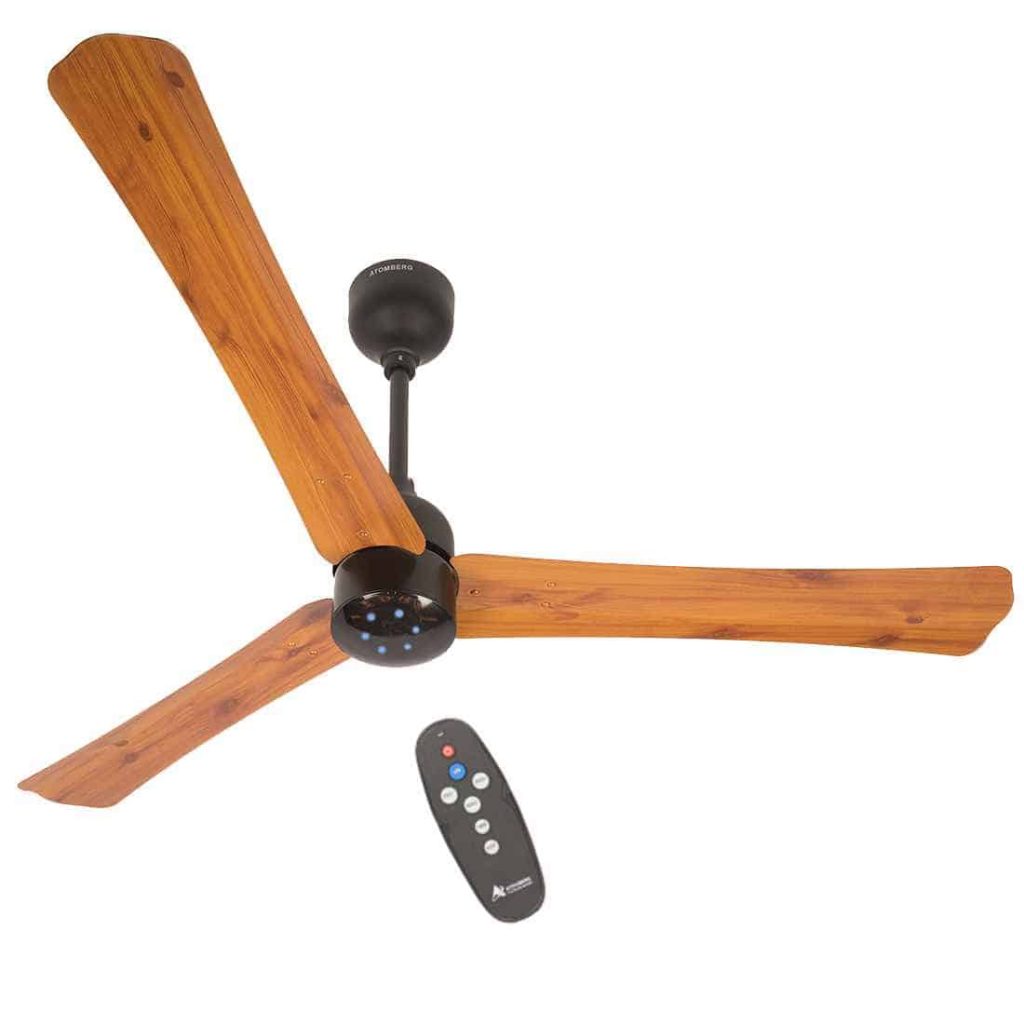
Household fans are a great way to keep your home and yourself cool when the warmer times of the year come along. Unlike other home cooling methods, they are cheaper to buy and maintain and also work well in different situations. There are different types of fans you can use in your home. In this post, I break down the different types of fans in our homes.
A fan is something that has become an integral part of our life because it makes a space breathable and doesn’t consume that much electricity as well. There are mainly eight types of fans available in the market such as ceiling fan, exhaust fan, low power consumption special fans, pedestal fan, table fan, tower fan, ventilation fan, and wall fan. All these high-quality fans come in an assortment of different color combinations, number of blades, sweep size and motor speed. In addition to that, modern-day fans offer features such as anti-dust, IoT, energy-saving, LED light, noise cancellation and remote functioning.
Source credits
- Wikipedia
- Britannica
- Elprocus
- Google images
- Byju’s And other infomatics & brand channels
